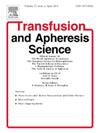Mob-Marly: A Latin American experience in hematopoietic stem cell mobilization for autologous transplantation
IF 1.2
4区 医学
Q4 HEMATOLOGY
引用次数: 0
Abstract
Background
Hematopoietic stem cell (HSC) mobilization is a critical step in autologous transplantation for patients with multiple myeloma and lymphoma. While several risk factors for mobilization failure have been identified, real-world data from Latin America remain limited. This study aimed to describe mobilization outcomes and associated factors in a transplant center in Colombia.
Methods
We conducted a retrospective cohort study including patients with multiple myeloma or lymphoma who initiated HSC mobilization between 2019 and 2023 at Clínica de Marly in Bogotá, Colombia. The primary outcome was mobilization success, defined as the collection of at least 2 × 10⁶ CD34⁺ cells/kg. We analyzed clinical, treatment-related, and laboratory variables using univariate and multivariate logistic regression to identify factors associated with mobilization success or failure.
Results
A total of 414 patients were included; the overall mobilization success rate was 86.7 %. In multivariate analysis, previous mobilization failure (OR 0.035, p < 0.001), age ≥ 65 years (OR 0.94, p = 0.003), and lymphoma diagnosis (OR 0.39, p = 0.02) were independently associated with mobilization failure. CD34⁺ counts on days + 4 and + 5 were strong predictors of successful mobilization, with thresholds of > 10 × 10⁶/L and > 20 × 10⁶/L, respectively. Currently, at our center, the standard mobilization regimen consists of filgrastim 10 µg/kg/day for five days, with just-in-time plerixafor administered based on CD34⁺ monitoring results.
Conclusion
Hematopoietic stem cell (HSC) mobilization remains a multifactorial challenge influenced by patient-, disease-, and treatment-related factors. Our findings underscore the importance of early identification of poor mobilizers and support the use of CD34⁺ monitoring and just-in-time plerixafor as effective strategies to optimize mobilization outcomes, particularly in resource-limited settings.
Mob-Marly:拉丁美洲自体移植中造血干细胞动员的经验
造血干细胞(HSC)动员是多发性骨髓瘤和淋巴瘤患者自体移植的关键步骤。虽然已经确定了几个动员失败的风险因素,但来自拉丁美洲的实际数据仍然有限。本研究旨在描述哥伦比亚移植中心的动员结果和相关因素。方法:我们在哥伦比亚波哥大 Clínica de Marly进行了一项回顾性队列研究,纳入了2019年至2023年期间启动HSC动员的多发性骨髓瘤或淋巴瘤患者。主要结果是动员成功,定义为收集至少2个 × 10 26 CD34 +细胞/kg。我们使用单变量和多变量逻辑回归分析了临床、治疗相关和实验室变量,以确定与活动成功或失败相关的因素。结果共纳入414例患者;总动员成功率为86.7 %。在多变量分析中,既往活动失败(OR 0.035, p <; 0.001)、年龄≥ 65岁(OR 0.94, p = 0.003)和淋巴瘤诊断(OR 0.39, p = 0.02)与活动失败独立相关。CD34 +天数+ 4和+ 5是成功动员的强预测因子,阈值分别为>; 10 × 10⁶/L和>; 20 × 10⁶/L。目前,在我们中心,标准的运动方案包括:非格拉司汀10 µg/kg/天,连续5天,并根据CD34⁺的监测结果及时给药。结论造血干细胞(HSC)动员仍然是一个受患者、疾病和治疗相关因素影响的多因素挑战。我们的研究结果强调了早期识别不良动员剂的重要性,并支持使用CD34 +监测和即时+作为优化动员结果的有效策略,特别是在资源有限的环境中。
本文章由计算机程序翻译,如有差异,请以英文原文为准。
求助全文
约1分钟内获得全文
求助全文
来源期刊
CiteScore
3.60
自引率
5.30%
发文量
181
审稿时长
42 days
期刊介绍:
Transfusion and Apheresis Science brings comprehensive and up-to-date information to physicians and health care professionals involved in the rapidly changing fields of transfusion medicine, hemostasis and apheresis. The journal presents original articles relating to scientific and clinical studies in the areas of immunohematology, transfusion practice, bleeding and thrombotic disorders and both therapeutic and donor apheresis including hematopoietic stem cells. Topics covered include the collection and processing of blood, compatibility testing and guidelines for the use of blood products, as well as screening for and transmission of blood-borne diseases. All areas of apheresis - therapeutic and collection - are also addressed. We would like to specifically encourage allied health professionals in this area to submit manuscripts that relate to improved patient and donor care, technical aspects and educational issues.
Transfusion and Apheresis Science features a "Theme" section which includes, in each issue, a group of papers designed to review a specific topic of current importance in transfusion and hemostasis for the discussion of topical issues specific to apheresis and focuses on the operators'' viewpoint. Another section is "What''s Happening" which provides informal reporting of activities in the field. In addition, brief case reports and Letters to the Editor, as well as reviews of meetings and events of general interest, and a listing of recent patents make the journal a complete source of information for practitioners of transfusion, hemostasis and apheresis science. Immediate dissemination of important information is ensured by the commitment of Transfusion and Apheresis Science to rapid publication of both symposia and submitted papers.

 求助内容:
求助内容: 应助结果提醒方式:
应助结果提醒方式:


